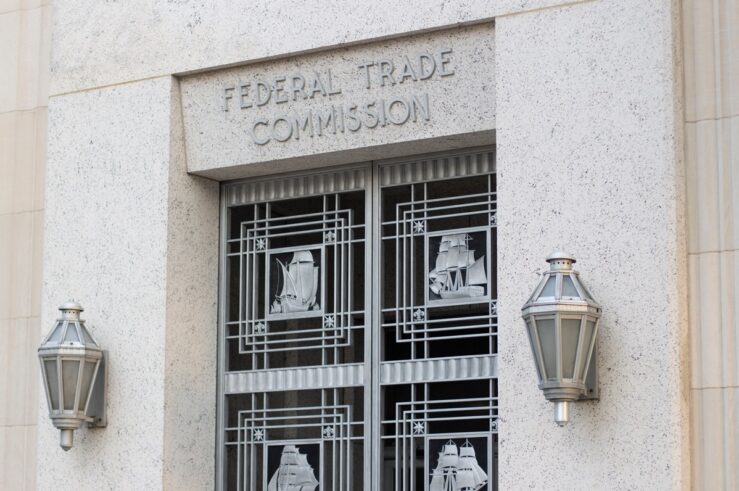In an effort to control drug spending, several states are considering initiatives that will impose new price controls on prescription drugs. Ballot measures under consideration in California and Ohio will require drug companies to sell drugs under various state programs at a mandated discount. And legislators in Massachusetts and Pennsylvania have drafted bills that would create new government commissions to regulate the price of drugs. These state initiatives have followed proposals by presidential nominees to enact new price controls to address the high costs of pharmaceuticals.
As I explain in a new study, further price controls are a bad idea for several reasons.
First, as I discussed in a previous post, several government programs, such as Medicaid, the 340B Program, the Department of Defense and Veterans Affairs drug programs, and spending in the coverage gap of Medicare Part D, already impose price controls. Under these programs, required rebates are typically calculated as set percentages off of a drug company’s average drug price. But this approach gives drug companies an incentive to raise prices; a required percentage rebate off of a higher average price can serve to offset the mandated price control.
Second, over 40 percent of drugs sold in the U.S. are sold under government programs that mandate price controls. With such a large share of their drugs sold at significant discounts, drug companies have the incentive to charge even higher prices to other non-covered patients to offset the discounts. Indeed, numerous studies and government analyses have concluded that required discounts under Medicaid and Medicare have resulted in increased prices for other consumers as manufacturers seek to offset revenue lost under price controls.
Third, evidence suggests that price controls contribute to significant drug shortages: at a below-market price, the demand for drugs exceeds the amount of drugs that manufacturers are willing or able to sell.
Fourth, price controls hinder innovation in the pharmaceutical industry. Brand drug companies incur an average of $2.6 billion in costs to bring each new drug to market with FDA approval. They must offset these significant costs with revenues earned during the patent period; within 3 months after patent expiry, generic competitors will have already captured over 70 percent of the brand drugs’ market share and significantly eroded their profits. But price controls imposed on drugs under patent increase the risk that drug companies will not earn the profits they need to offset their development costs (only 20% of marketed brand drugs ever earn enough sales to cover their development cost). The result will be less R&D spending and less innovation. Indeed, a substantial body of empirical literature establishes that pharmaceutical firms’ profitability is linked to their research and development efforts and innovation.
Instead of imposing price controls, the government should increase drug competition in order to reduce drug spending without these negative consequences. Increased drug competition will expand product offerings, giving consumers more choice in the drugs they take. It will also lower prices and spur innovation as suppliers compete to attain or protect valuable market share from rivals.
First, the FDA should reduce the backlog of generic drugs awaiting approval. The single most important factor in controlling drug spending in recent decades has been the dramatic increase in generic drug usage; generic drugs have saved consumers $1.68 trillion over the past decade. But the degree to which generics reduce drug prices depends on the number of generic competitors in the market; the more competitors, the more price competition and downward pressure on prices. Unfortunately, a backlog of generic drug approvals at the FDA has restricted generic competition in many important market segments. There are currently over 3,500 generic applications pending approval; fast-tracking these FDA approvals will provide consumers with many new lower-priced drug options.
Second, regulators should expedite the approval and acceptance of biosimilars—the generic counterparts to high-priced biologic drugs. Biologic drugs are different from traditional medications because they are based on living organisms and, as a result, are far more complex and expensive to develop. By 2013, spending on biologic drugs comprised a quarter of all drug spending in the U.S., and their share of drug spending is expected increase significantly over the next decade. Unfortunately, the average cost of a biologic drug is 22 times greater than a traditional drug, making them prohibitively expensive for many consumers.
Fortunately, Congress has recognized the need for cheaper, “generic” substitutes for biologic drugs—or biosimilars. As part of the Affordable Care Act, Congress created a biosimilars approval pathway that would enable these cheaper biologic drugs to obtain FDA approval and reach patients more quickly. Nevertheless, the FDA has approved only one biosimilar for use in the U.S. despite several pending biosimilar applications. The agency has also yet to provide any meaningful guidance as to what standards it will employ in determining whether a biosimilar is interchangeable with a biologic. Burdensome requirements for interchangeability increase the difficulty and cost of biosimilar approval and limit the ease of biosimilar substitution at pharmacies.
Expediting the approval of biosimilars will increase competition in the market for biologic drugs, reducing prices and allowing more patients access to these life-saving and life-enhancing treatments. Estimates suggest that a biosimilar approval pathway at the FDA will save U.S. consumers between $44 billion and $250 billion over the next decade.
The recent surge in drug spending must be addressed to ensure that patients can continue to afford life-saving and life-enhancing medications. However, proposals calling for new price controls are the wrong approach. While superficially appealing, price controls may have unintended consequences—less innovation, drug shortages, and higher prices for some consumers—that could harm consumers rather than helping them. In contrast, promoting competition will lower pharmaceutical prices and drug spending without these deleterious effects.




